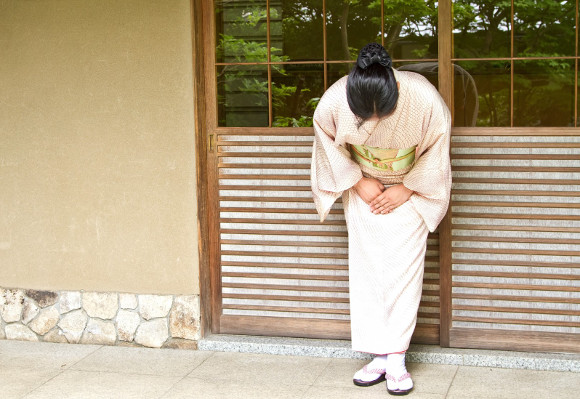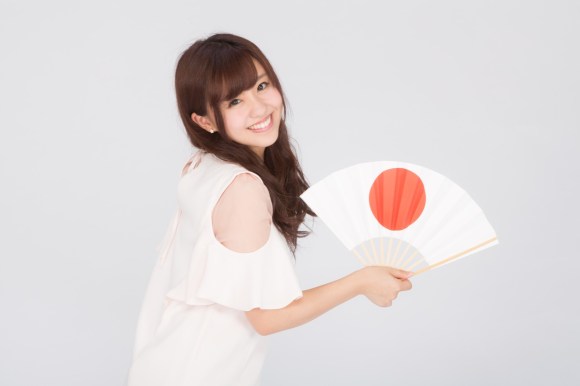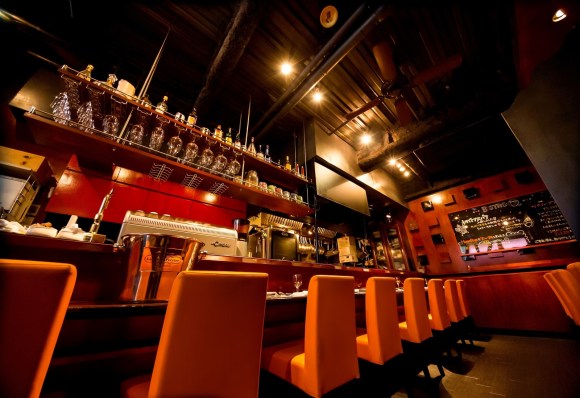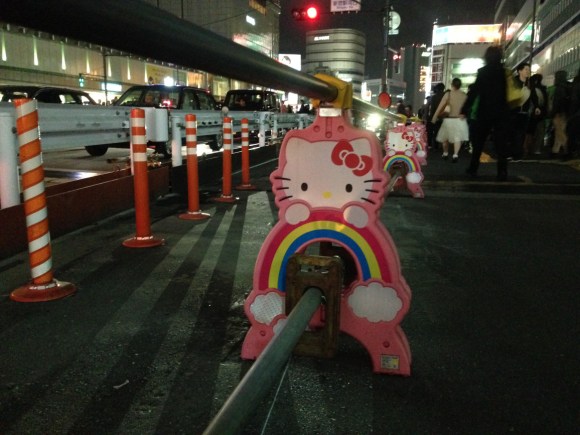
In Japan, the customer is God, and sometimes that means going above and beyond to please with distinctive styles of service.
A lot has been said about the omotenashi spirit of excellent hospitality that exists in Japan, built upon the tenet of “ichi-go ichi-e” (“one time, one meeting”), which highlights the importance of making each encounter the best it possibly can be. This kind dedication to satisfying people’s needs can be seen throughout the country’s customer service industry, resulting in an impressive level of service that’s become one of the main draws for visitors. According to Japanese portal site Naver Matome, this type of service can often surprise unsuspecting foreigners, as a trip to a store or restaurant here quickly becomes a lesson in unique styles of behaviour not often seen overseas, and they’ve come up with five points of note, which they say are surprising, and sometimes uncomfortable, for foreign visitors.
The big send-off
After you’ve made a purchase at a store in Japan, it’s not uncommon for the sales clerk to walk with you as you exit the shop, dutifully carrying your bagged-up item with them, before ceremoniously handing it to you and then thanking you with a bow as you go on your way. While this type of service is usually relegated to traditional shops and fashion stores, it’s a style of service that can be seen in a number of other industries, like car retailers and hoteliers, and even petrol stations, where they’ll walk with you to the front of their establishment, and guide you safely into traffic before bowing deeply several times until you disappear from sight. While this sense of hospitality and care is incredibly thoughtful, the ceremonious send-off can also make some customers feel a little uncomfortable, with a sense of pressure on them to accept the service graciously while the eyes of staff are firmly on them as they do their best to make a dignified exit.
Noisy Greetings
Rather than make eye contact with a broad smile and a casual greeting, staff in Japan will pierce your ears with loud cries of “irasshaimase!” (“welcome!”) and “arigatou gozaimasu” (“thank you”) as you enter and leave the store. After you’ve been here a while, the incessant, and often incredibly nasal, welcome greetings can begin to grate on your nerves, particularly at the supermarket, when store clerks will yell out a welcome without making eye contact whenever a customer comes close to them in the aisles. However, some never tire of the enthusiastic greeting culture, especially when it creates a bustling, exciting atmosphere at lively dining establishments like izakaya pub-style eateries.
English Menus and Western Cutlery
Sometimes a well-meaning attempt to accomodate foreign tourists can end up being a blow to those who come to Japan eager to try out their well-practised Japanese skills. Even when it could be just as easy to point-and-order from a photo-laden Japanese menu, some restaurants will swiftly replace it with an English one, before you even get to lay eyes on one of the exquisitely written kanji on the page. Depending on where you go, some will even bring out a fork, with or without chopsticks, when the meal is served, which can sometimes be helpful, but at the same time, it can also take away from the thrill of an authentic Japanese experience.
Traffic Wardens
Another surprising element of Japanese customer service can be seen on the roads and in car parks across the country, with uniformed traffic wardens guiding vehicles with glowing rods and elegant hand signals. While the need for their presence is warranted at festivals and large events, it’s often surprising to see them standing dutifully outside near-empty carparks at supermarkets and family restaurants, ready to help customers where parking is usually a straightforward, uncomplicated affair.
Safety Management
Japan is known for its safety, and the extreme attention to care and detail can be seen at construction sites around the country. Whether it’s rows and rows of cutely adorned metal railings or construction staff standing beside temporary plates on the footpath with megaphones asking people to watch their step, the careful, courteous attitude given to passers-by is just another example of the way Japan goes above and beyond to look after the people around them.
This list of five surprising, and sometimes uncomfortable, types of Japanese service has just scratched the surface of an extensive client-oriented industry filled with a huge array of tiny details designed to please and accommodate the all-important customer. What types of surprising service would you add to the list?
Source: Naver Matome
Top Image: Pakutaso
Insert Images: Pakutaso (1, 2, 3, 4, 5), RocketNews24






 Japanese politeness is a myth: One person’s tale strikes a chord with people around the country
Japanese politeness is a myth: One person’s tale strikes a chord with people around the country Japanese customer finds run-in with “Indian” convenience store clerk a refreshing experience
Japanese customer finds run-in with “Indian” convenience store clerk a refreshing experience Japan is so polite even its hanko stamps bow to show respect
Japan is so polite even its hanko stamps bow to show respect Japan now has a traffic safety video for cats to watch to help keep them safe on the streets
Japan now has a traffic safety video for cats to watch to help keep them safe on the streets Convenience store clerk hospitalized by customer dissatisfied with “smile-less” service
Convenience store clerk hospitalized by customer dissatisfied with “smile-less” service McDonald’s new Happy Meals offer up cute and practical Sanrio lifestyle goods
McDonald’s new Happy Meals offer up cute and practical Sanrio lifestyle goods All-you-can-drink Starbucks and amazing views part of Tokyo’s new 170 meter-high sky lounge
All-you-can-drink Starbucks and amazing views part of Tokyo’s new 170 meter-high sky lounge More foreign tourists than ever before in history visited Japan last month
More foreign tourists than ever before in history visited Japan last month Beautiful Sailor Moon manhole cover coasters being given out for free by Tokyo tourist center
Beautiful Sailor Moon manhole cover coasters being given out for free by Tokyo tourist center Starbucks reopens at Shibuya Scramble Crossing with new look and design concept
Starbucks reopens at Shibuya Scramble Crossing with new look and design concept The oldest tunnel in Japan is believed to be haunted, and strange things happen when we go there
The oldest tunnel in Japan is believed to be haunted, and strange things happen when we go there Is the new Shinkansen Train Desk ticket worth it?
Is the new Shinkansen Train Desk ticket worth it? Hey, Japanese taxi driver! Take us to your favorite restaurant in Tsuruga City!
Hey, Japanese taxi driver! Take us to your favorite restaurant in Tsuruga City! We try 400-year-old Ghost Child Care Candy – so good it’ll raise the dead
We try 400-year-old Ghost Child Care Candy – so good it’ll raise the dead Seiko adds limited edition starter Pokémon to their luxury watch collection
Seiko adds limited edition starter Pokémon to their luxury watch collection Disney princesses get official manga makeovers for Manga Princess Cafe opening in Tokyo
Disney princesses get official manga makeovers for Manga Princess Cafe opening in Tokyo We try out “Chan Ramen”, an underground type of ramen popular in the ramen community
We try out “Chan Ramen”, an underground type of ramen popular in the ramen community Beautiful new Final Fantasy T-shirt collection on the way from Uniqlo【Photos】
Beautiful new Final Fantasy T-shirt collection on the way from Uniqlo【Photos】 Foreign English teachers in Japan pick their favorite Japanese-language phrases【Survey】
Foreign English teachers in Japan pick their favorite Japanese-language phrases【Survey】 There’s a park inside Japan where you can also see Japan inside the park
There’s a park inside Japan where you can also see Japan inside the park Japanese convenience store packs a whole bento into an onigiri rice ball
Japanese convenience store packs a whole bento into an onigiri rice ball Studio Ghibli releases Kiki’s Delivery Service chocolate cake pouches in Japan
Studio Ghibli releases Kiki’s Delivery Service chocolate cake pouches in Japan Japan’s bone-breaking and record-breaking roller coaster is permanently shutting down
Japan’s bone-breaking and record-breaking roller coaster is permanently shutting down New definition of “Japanese whiskey” goes into effect to prevent fakes from fooling overseas buyers
New definition of “Japanese whiskey” goes into effect to prevent fakes from fooling overseas buyers Foreign passenger shoves conductor on one of the last full runs for Japan’s Thunderbird train
Foreign passenger shoves conductor on one of the last full runs for Japan’s Thunderbird train Our Japanese reporter visits Costco in the U.S., finds super American and very Japanese things
Our Japanese reporter visits Costco in the U.S., finds super American and very Japanese things Kyoto bans tourists from geisha alleys in Gion, with fines for those who don’t follow rules
Kyoto bans tourists from geisha alleys in Gion, with fines for those who don’t follow rules Studio Ghibli unveils Mother’s Day gift set that captures the love in My Neighbour Totoro
Studio Ghibli unveils Mother’s Day gift set that captures the love in My Neighbour Totoro Domino’s Japan now sells…pizza ears?
Domino’s Japan now sells…pizza ears? New Japanese KitKat flavour stars Sanrio characters, including Hello Kitty
New Japanese KitKat flavour stars Sanrio characters, including Hello Kitty Sales of Japan’s most convenient train ticket/shopping payment cards suspended indefinitely
Sales of Japan’s most convenient train ticket/shopping payment cards suspended indefinitely Sold-out Studio Ghibli desktop humidifiers are back so Totoro can help you through the dry season
Sold-out Studio Ghibli desktop humidifiers are back so Totoro can help you through the dry season Japanese government to make first change to romanization spelling rules since the 1950s
Japanese government to make first change to romanization spelling rules since the 1950s Ghibli founders Toshio Suzuki and Hayao Miyazaki contribute to Japanese whisky Totoro label design
Ghibli founders Toshio Suzuki and Hayao Miyazaki contribute to Japanese whisky Totoro label design Doraemon found buried at sea as scene from 1993 anime becomes real life【Photos】
Doraemon found buried at sea as scene from 1993 anime becomes real life【Photos】 Tokyo’s most famous Starbucks is closed
Tokyo’s most famous Starbucks is closed One Piece characters’ nationalities revealed, but fans have mixed opinions
One Piece characters’ nationalities revealed, but fans have mixed opinions We asked a Uniqlo employee what four things we should buy and their suggestions didn’t disappoint
We asked a Uniqlo employee what four things we should buy and their suggestions didn’t disappoint Princesses, fruits, and blacksmiths: Study reveals the 30 most unusual family names in Japan
Princesses, fruits, and blacksmiths: Study reveals the 30 most unusual family names in Japan Studio Ghibli’s new desktop Howl’s Moving Castle will take your stationery on an adventure
Studio Ghibli’s new desktop Howl’s Moving Castle will take your stationery on an adventure Nintendo takes steps to protect staff from growing problem of customer harassment
Nintendo takes steps to protect staff from growing problem of customer harassment Beautiful models and actresses delivering boxed lunches in Tokyo with new bento service
Beautiful models and actresses delivering boxed lunches in Tokyo with new bento service Super-enthusiastic convenience store clerk fights the man, continues serving the people
Super-enthusiastic convenience store clerk fights the man, continues serving the people Japanese workers reveal the 8 most astonishing things new employees do in the workplace
Japanese workers reveal the 8 most astonishing things new employees do in the workplace We try five menu recommendations from a clerk at CoCo Ichibanya and almost fall in love
We try five menu recommendations from a clerk at CoCo Ichibanya and almost fall in love Hokkaido Earthquake Day 5: Our Hokkaido-based reporter shares his experiences in an affected area
Hokkaido Earthquake Day 5: Our Hokkaido-based reporter shares his experiences in an affected area Japan’s second-largest convenience store chain changes service policy for sake of foreign workers
Japan’s second-largest convenience store chain changes service policy for sake of foreign workers Police in Japan arrest woman on suspicion of literal ass-kicking
Police in Japan arrest woman on suspicion of literal ass-kicking Japanese commenters applaud tweet denouncing over-entitled customers
Japanese commenters applaud tweet denouncing over-entitled customers “The world does not revolve around you!” Japanese shop clerk unleashes frustration on Twitter
“The world does not revolve around you!” Japanese shop clerk unleashes frustration on Twitter Cats bowing in apology is Japan’s latest weird gacha capsule toy collection
Cats bowing in apology is Japan’s latest weird gacha capsule toy collection Japanese custom of bowing to cars at crosswalks keeps locals safe, warms Internet’s hearts【Video】
Japanese custom of bowing to cars at crosswalks keeps locals safe, warms Internet’s hearts【Video】 Survey reveals the top five times Japanese travelers realise just how Japanese they are
Survey reveals the top five times Japanese travelers realise just how Japanese they are Saitama senior arrested after calling telecom provider 24,000 times to complain
Saitama senior arrested after calling telecom provider 24,000 times to complain Should saying thanks at a Japanese convenience store go without saying?
Should saying thanks at a Japanese convenience store go without saying?
Leave a Reply